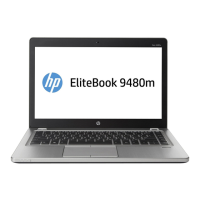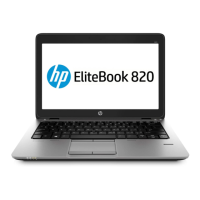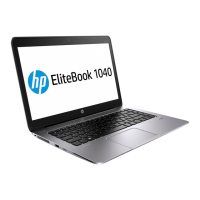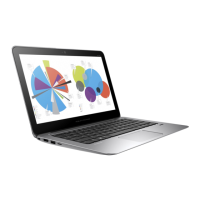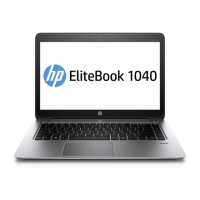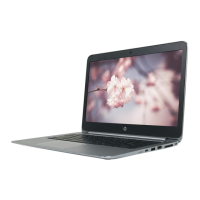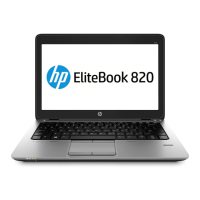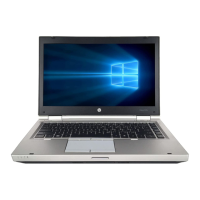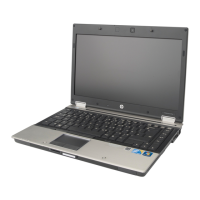Non Volatile
Memory Type
Amount
(Size)
Does this
memory
store
customer
data?
Does this
memory
retain data
when power
is removed?
What is the
purpose of this
memory?
How is data input into this
memory?
How is this memory write
protected?
public unless a rmware
upgrade is necessary to
address a unique issue.
Fingerprint Reader 512kByte
Flash
Yes Yes Stores
ngerprint
templates.
By enrolling in HP
ProtectTools Security
Manager.
Only a digitally signed
application can make the
call to write to the ash.
Questions and answers
1. How can the BIOS settings be restored (returned to factory settings)?
a. Turn on or restart the computer and press F10 when prompted near the bottom of the display.
b. Select File, then select Restore defaults.
c. Follow the on-screen instructions.
d. Select File, save changes and exit, then press Enter.
2. What kind of conguration data is stored on the DIMM Serial Presence Detect (SPD) memory
module? How would this data be written?
The DIMM SPD memory contains information about the memory module such as size, serial number,
data width, speed/timing, voltage and thermal information. This information is written by the module
manufacturer and stored on an EEPROM. This EEPROM cannot be written to when the memory module is
installed in a PC. Third party tools do exist that can write to the EEPROM when the memory module is
not installed in a PC. There are various third party tools available to read SPD memory.
3. Does the “Firmware Hub for System BIOS” contain the BIOS program? Is this chip writable, and if so
how?
The Firmware Hub does contain the BIOS program and is writable. A utility is required to perform the
write function.
4. In some PC systems, the Firmware Hub for System BIOS is a ash memory chip so that updates can
be written by the customer. Is this true for these BIOS chips?
Yes, they are ash memory chips.
5. What is meant by “Restore the nonvolatile memory found in Intel-based system boards”?
This relates to clearing the Real Time Clock (RTC) CMOS memory that contains PC conguration data.
6. Does resetting the CMOS conguration memory return the PC back to factory defaults?
The process of resetting the CMOS will return certain system settings to factory default but will not reset
many of the system data and conguration defaults to their factory settings. To return these system
data and conguration defaults to factory settings, refer to question and answer 1 and follow the
instructions for returning the BIOS settings to factory defaults.
112 Chapter 15 Statement of Volatility

